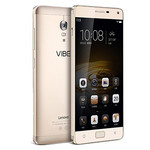Lenovo Vibe P1 Pro
Specifications

Display
5.50 inch 16:9, 1920 x 1080 pixel 401 PPI, IPS LCD capacitive touchscreen, 16M colors, glossy: yes
Connections
Card Reader: microSD, up to 256 GB (dedicated slot)
Networking
802.11 a/b/g/n/ac (a/b/g/n = Wi-Fi 4/ac = Wi-Fi 5/), Bluetooth 4.1, Dual SIM, LTE, GPS
Size
height x width x depth (in mm): 10 x 153 x 76 ( = 0.39 x 6.02 x 2.99 in)
Battery
5000 mAh Lithium-Polymer
Operating System
Android 5.1 Lollipop
Camera
Primary Camera: 13 MPix
Secondary Camera: 5 MPix
Weight
189 g ( = 6.67 oz / 0.42 pounds) ( = 0 oz / 0 pounds)
Price comparison
Lenovo Vibe P1 Pro
Average Score: 81% - good
Average of
1 scores (from
1 reviews)
Reviews for the Lenovo Vibe P1 Pro
Comment
Qualcomm Adreno 405: Integrated graphics card for ARM based SoCs. Depending on the used SoC the clock rate is around 500 MHz and features 48 unified shaders.
Only some 3D games with very low demands are playable with these cards.
» Further information can be found in our Comparison of Mobile Graphics Cards and the corresponding Benchmark List.
615 MSM8939:
Mid-range ARM SoC with 8 CPU cores (Cortex-A53, 64-bit capable) and an Adreno 405 GPU. Manufactured in a 28 nm LP process.
» Further information can be found in our
Comparison of Mobile Processsors.
Similar devices from a different Manufacturer
Devices from a different Manufacturer and/or with a different CPU
Devices with the same GPU
Devices with Same Screen Size and/or Weight
Working For Notebookcheck
Are you a techie who knows how to translate? Then join our Team!
Details here
Top 10 Laptops
Multimedia, Budget Multimedia, Gaming, Budget Gaming, Lightweight Gaming, Business, Budget Office, Workstation, Subnotebooks, Ultrabooks, Chromebooks
under 300 USD/Euros, under 500 USD/Euros, 1,000 USD/Euros, for University Students, Best Displays
Top 10 Smartphones
Smartphones, Phablets, ≤6-inch, Camera Smartphones
Stefan Hinum, 2017-01-13 (Update: 2017-01-13)

 TR→EN Archive.org version
TR→EN Archive.org version



